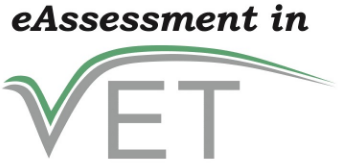-
Covid-19
-
Introduction
-
Issues and Barriers
-
Pedagogy
-
Feedback
-
Approaches
-
Continuing Professional Development
-
Organising
-
Glossary
- All Glossary
- automation in education
- blog
- cloud computing
- content management system
- e-portfolio
- eAssessment
- edtech
- forum
- H5P
- Individualise in education
- LMS platform
- Moodle
- open-source software
- references
- resource facilitation
- rubric
- Validity
- video streaming
- virtual classroom
- virtual room
- vlog
- VoIP
- wiki
- Show All Articles9 Collapse Articles
-
Creative Commons
-
Tools
- Aha Slides
- Backchannel Chat
- Coggle
- Conceptboard
- Formative
- FreshGrade
- Getcrossword
- Google Forms
- Kahoot!
- medQuizz
- Mentimeter
- Moodle
- Nearpod
- Padlet
- Poll Everywhere
- Quizlet
- Quizziz
- Seesaw
- Socrative
- Trello
- Typeform
- Wordwall
- Show All Articles7 Collapse Articles
-
Português
-
- AhaSlides
- Backchannel Chat
- Conceptboard
- Coggle
- Formative
- FreshGrade
- Getcrossword
- Google Forms
- Kahoot!
- medQuizz
- Mentimeter
- Moodle
- Nearpod
- Padlet
- Poll Everywhere
- Quizlet
- Quizziz
- Seesaw
- Socrative
- Typeform
- Wordwall
- Trello
- Show All Articles7 Collapse Articles
-
Scenarios
Actors and their roles
Manager/Administrator, Trainer, Tutor, Learner, Automatic tutoring assistant, helpdesk, etc.
What do they do
Administrators/managers – guarantee that the platforms have all set-up instruments according to the course design, course assessment strategies, instruments and level of certification.
Trainers and Teachers – design of the e-assessment strategy, instruments and timings. Create the e-assessment set of instruments including the database of questions for exams, self-assessments, closed response questionnaires, open exercises, simulations, specific tasks, collaborative exercises, research activities, essays, etc.
IT and Managers – support trainers and administrators for the e-assessment implementation. Train the trainers on the possible instruments to be used, find e-assessment patterns by course topic/subject area, support technically all actors, support co-creation and evaluation of instruments, etc.
Learners – co-create e-assessment instruments, participate in the e-assessment instruments improvement
